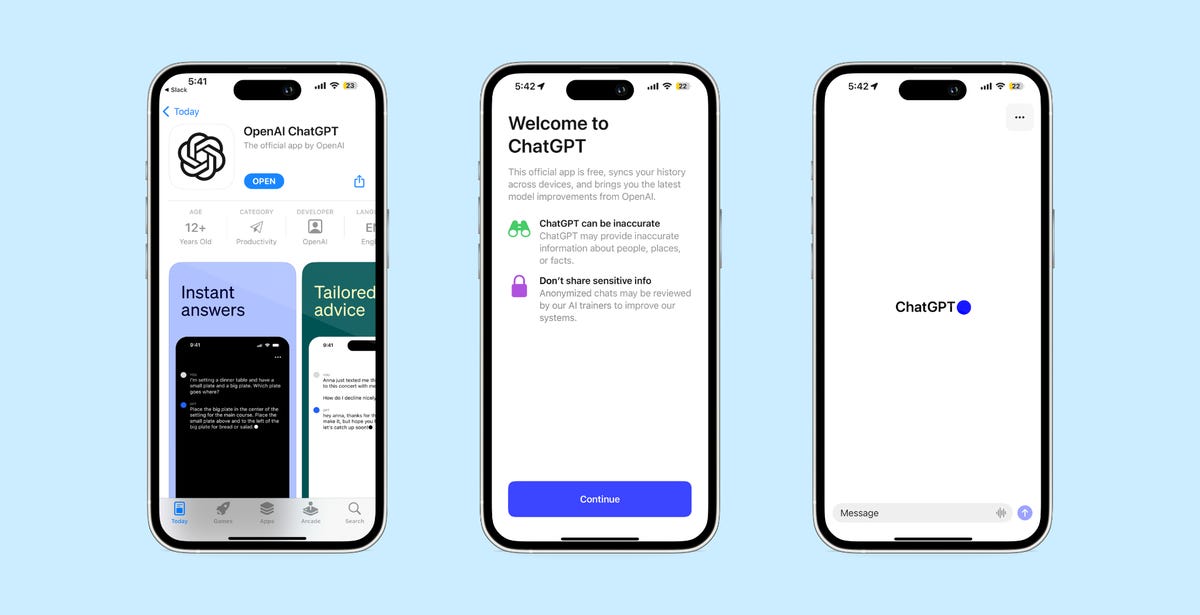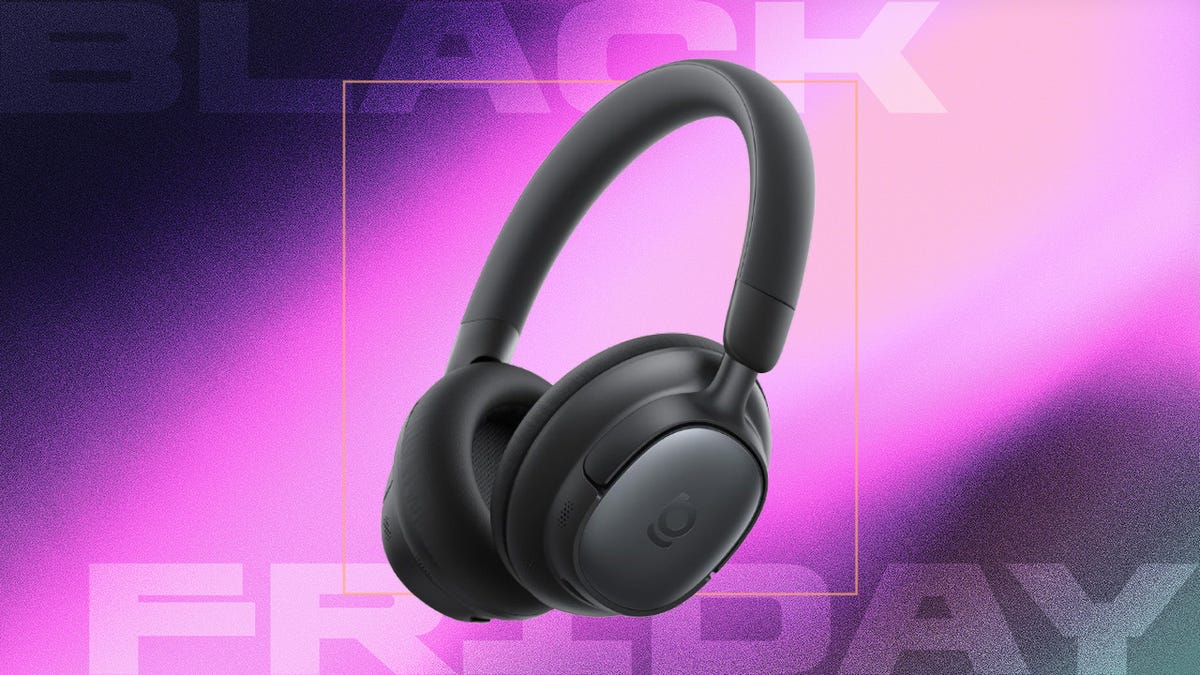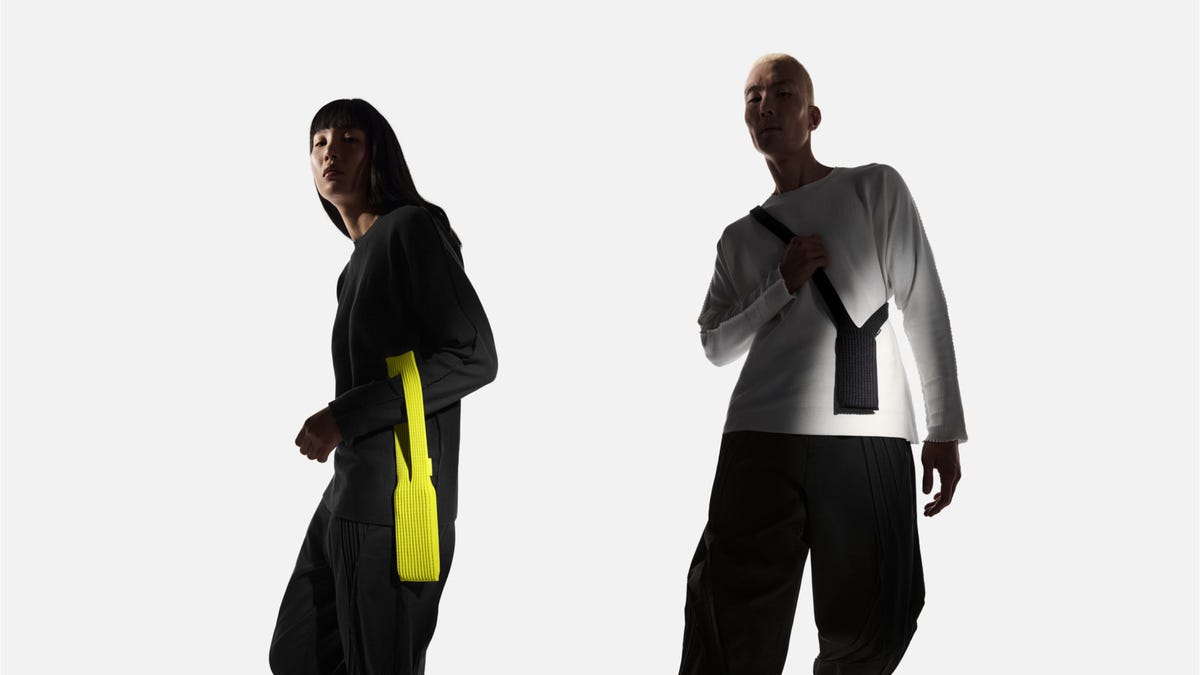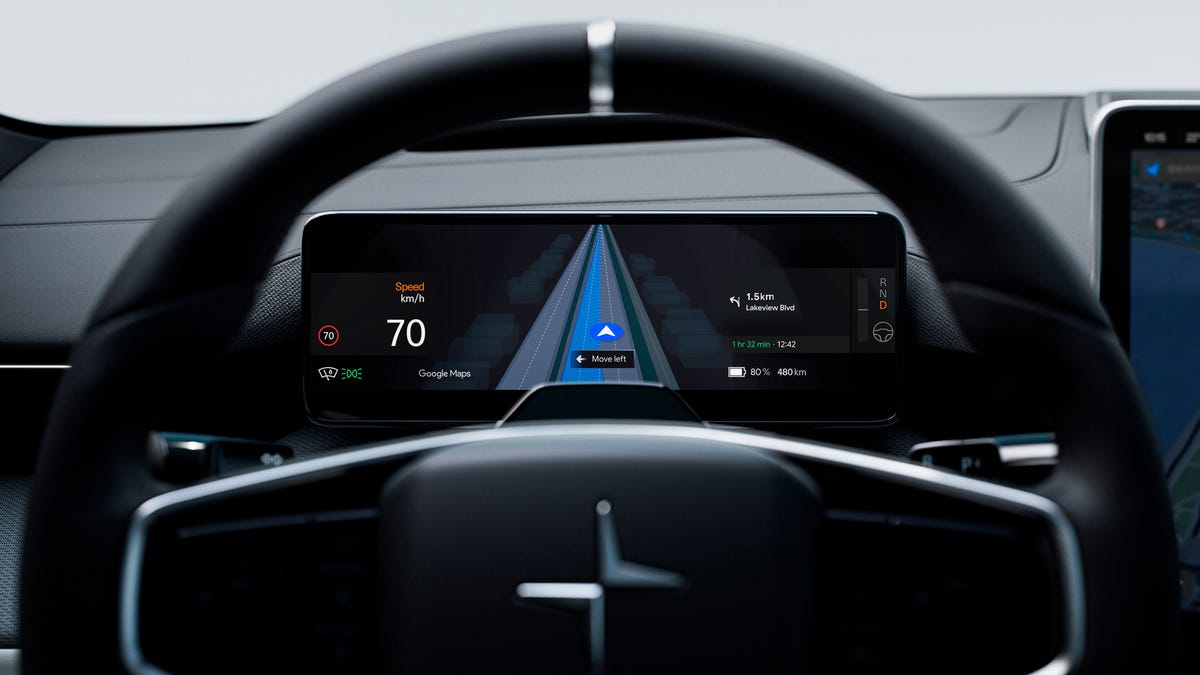Technologies
Google Flooded the Internet With AI News. Where’s Apple?
Apple hasn’t publicly entered the generative AI race yet. But there’s a good chance we’ll see the technology baked into its upcoming software.

Unless you’ve been living under a rock, you’ve probably heard the term «generative AI» at least a handful of times now, perhaps thanks to the wildly popular ChatGPT service. The AI-powered chatbot’s success didn’t just shine a spotlight on OpenAI, the creator behind it, but it also catalyzed an AI arms race in the tech industry – a race from which Apple has been noticeably absent.
Earlier this month, Google made a flurry of AI-related announcements at its annual developer conference, including a new AI-infused version of search and Bard, its AI-powered chatbot, which is being rolled out across the world. It’s not just Google. Before that, Microsoft built generative AI into its suite of long-established productivity apps like Word, PowerPoint and Outlook in a move that’s changing how more than a billion people work. In February, Meta released its own sophisticated AI model, which has many of the same capabilities at ChatGPT and Bard, as open-source software for public use.
But what about Apple?
The short answer: Even though AI technology is hardly new to Apple, the iPhone maker still remains missing – at least publicly – from the current generative AI gold rush.
«We’re in the heart of the generative AI hype cycle, and there are major new developments weekly, » Avi Greengart, analyst at Techsponential, told CNET. «Apple can afford to be deliberate in how it applies new technologies to fit its ecosystem.»

OpenAI recently dropped a ChatGPT app for the iPhone. The new app, which is free, gives you a way to take OpenAI’s AI chatbot on the go.
Apple’s wait-and-see approach
Apple has typically adopted a wait-and-see approach around emerging technology, and that has often worked for the tech giant. For instance, the iPad wasn’t the first-ever tablet, but for many, including CNET editors, it is the best tablet. A more recent example on the hardware side is foldable phones. Apple is the only major holdout, with Google beating it to the punch. The search giant launched its inaugural foldable phone, the Pixel Fold, at its developer conference in May – and it hasn’t been making phones for as long as Apple. There are rumors, however, that a foldable iPhone, possibly known as the iPhone Flip, could go to market in 2025.
Based on remarks from CEO Tim Cook, it seems like Apple may be taking a similar approach with generative AI. «I do think it’s very important to be deliberate and thoughtful in how you approach these things,» Cook said in response to a question related to generative AI on Apple’s earnings call in May. «And there’s a number of issues that need to be sorted. … AI is being talked about in a number of different places. But the potential is certainly very interesting.»
However, with a fast-developing AI technology, Apple could risk falling far behind its rivals. For all Apple’s business success, it has lagged in specific categories. For instance, its HomePod smart speaker didn’t hit the market until years after the Amazon Echo and Google Home, which have a far higher market share than Apple in the smart speaker category.
When it comes to the topic of AI, Apple isn’t alone in adopting a cautious approach. It’s also coming from the technology’s own backers – including the founder and CEO of OpenAI, Sam Altman, who has concerns ranging from election disinformation to mass jobs displacement.

OpenAI CEO Sam Altman describes Microsoft’s AI partnership at a Bing search engine press event.
Last Tuesday, speaking before a Senate subcommittee, Altman said he’s «eager» for artificial intelligence to be regulated. He also spoke about the promise of artificial intelligence and discussed its potential harms. «If this technology goes wrong, it can go quite wrong,» he said.
Altman’s comments followed calls by a group of AI researchers and tech leaders, including Elon Musk and Steve Wozniak, to pause development of AI systems more powerful than GPT-4 over concerns about runaway risks without sufficient guardrails. Geoffrey Hinton, credited as the «godfather of AI,» resigned from Google in May so that he could freely share his concerns about the technology he helped create, which he says could cause the world serious harm.
Does generative AI fit into Apple’s business?
Although Apple hasn’t publicly entered the generative AI fight, a recent 9to5Mac report said that the iPhone maker is working on an upgrade to Siri, one that could improve the virtual assistant’s conversational abilities via ChatGPT-like AI concepts. Apple didn’t reply to a request for comment.
While Apple hasn’t publicly discussed any plans for generative AI-based products, Cook did discuss the company’s focus on AI during its May earnings call. He cited AI-powered features like fall and crash detection, which are both available on the latest iPhones and Apple Watches.
«We view AI as huge,» he said. «We’ll continue weaving it into our products on a very thoughtful basis.»
AI is far from a brand new concept to Apple. Siri, which was released 12 years ago, uses speech recognition and machine learning to understand a query and serve up an answer. In recent months, Apple debuted camera enhancements such as photographic styles and the ability to cut and paste a subject from an image, both of which depend on AI.
In addition, Apple’s Macs and MacBooks, which now run on Apple-designed M1 and M2 chips, have dedicated neural engines with 16 cores, which are aimed at AI and machine learning tasks. Apple says AI performance is 40% faster than with its old Intel chips.
«You can expect that AI performance will become more and more important as more developers figure it out,» wrote CNET’s Stephen Shankland in a January article detailing Apple’s M2 chipset.
But as Greengart highlights, it would make sense for Apple to bring the tech to certain products that extend beyond Siri as well as its current AI-powered offerings.
«Apple likes to position itself as being at the intersection of technology and liberal arts,» Greengart told CNET in an email. «Generative AI would fit nicely into tools and software that Apple provides for artistic and personal expression; that could include anything from GarageBand to photo editing to email across iPhones, iPads, and Mac.»
However, a chatbot in the vein of OpenAI’s ChatGPT or Google’s Bard is likely not in the books for Apple. The underlying technology behind those chatbots, known as large language models, has a high resource requirement for development. That means significant investment in the form of computing resources, human talent and power, rendering it a possibility for huge enterprises with vast resources. While Apple presumably has those resources, it’ll have to be a worthwhile investment for the iPhone maker.
All eyes on WWDC
After Google devoted a considerable amount of air time to generative AI at its conference this month, all eyes are on Apple and what it might reveal at its Worldwide Developers Conference on June 5. Apple executives could offer more clues on how the iPhone maker views generative AI and how it fits into the broader business. At WWDC, Apple typically introduces new software for the iPhone, Apple Watch, iPad and so on, and it’s possible that Apple could bake more AI into those updates.
Ahead of the conference, Apple previewed a slew of accessibility software features expected to make their way to its upcoming iOS 17 mobile operating system. One of the noteworthy drops is called Personal Voice. It uses on-device machine learning to allow users at risk of speech loss to replicate a voice after about 15 minutes of training. The phone can then speak aloud typed-out phrases, and it’s compatible with FaceTime and phone calls in a feature that could be a form of generative AI for voice.
More likely to take center stage, however, is Apple’s highly anticipated mixed reality headset, which would mark the company’s first entry into a new hardware category since 2015. According to a January Bloomberg report, it’ll cost around $3,000, run on Apple’s latest M2 chipset, boast eye- and hand-tracking systems, and feature a digital crown that lets users switch between AR and VR modes. It’s also probable that Apple will take advantage of fast-developing AI technology for its latest device as well.
«We need to keep in mind that generative AI is not only about generating text but also other types of content like graphics,» Will Wong, of market researcher International Data, told CNET. «Thus, it will be an area that is favorable for Apple to look into, especially if there is an AR/VR headset that comes into its product portfolio.»
Technologies
This New Car Feature Uses AI to Keep You From Missing Your Exit
Google Maps’ live lane guidance is being integrated into Polestar’s head-up display.
Technologies
Hurry to Nab the Baseus Bowie MH1 Headphones for Over Half Off With This Early Black Friday Deal
This deal drops the price of this premium pair to just $47, but this discount ends soon.

High-quality noise-canceling headphones can cost a pretty penny, especially if you are after adaptive ANC, all-day comfort, and a reliable battery life. Most options with all these features sit well over $100, but we just found a way to score a premium pair for less than $50.
Amazon has a solid early Black Friday deal on the Baseus Bowie MH1 headphones. You can get them for 20% off right now, which drops the price to $80. But stack that with the $25 on-page coupon and use the promo code 8JWTGEUN at checkout, and you slash another $33 off. That brings the final price down to just $47, which is a steal considering all the features you are going to enjoy.
The headphones come with cloud-soft protein leather earcups with resilient memory foam for cloud-like comfort. The pair is capable of blocking up to 99.8% of noise with –48 dB deep noise cancellation, and it adapts to your surroundings as needed.
Hey, did you know? CNET Deals texts are free, easy and save you money.
The 36mm drivers and full-range LCP diaphragms give you clear, rich sound no matter what you listen to. In addition, with Baseus Immersive Spatial Acoustics, the audio surrounds you for a more natural listening experience. For clearer calls, the headphones also pack 5-mic sound sensors with AI-powered voice enhancement and wind-noise reduction. You won’t have to repeat yourself constantly.
Battery-wise, you get up to 80 hours of playtime with ANC off, and 55 hours with it on. A quick 10-minute top-up can also get you up to an additional 10 hours of playback, which is great for when you’re out and about.
HEADPHONE DEALS OF THE WEEK
-
$200 (save $151)
-
$199 (save $150)
-
$329 (save $100)
-
$328 (save $72)
Why this deal matters
High-end audio gear doesn’t come cheap. This deal takes over 50% off a powerful pair of headphones, making the upgrade easy. It won’t last long, though, so it’s best to snap it up sooner rather than later.
Join Our Daily Deals Text Group!
Get hand-picked deals from CNET shopping experts straight to your phone.
By signing up, you confirm you are 16+ and agree to receive recurring marketing messages at the phone number provided. Consent is not a condition of purchase. Reply STOP to unsubscribe. Msg & data rates may apply. View our Privacy Policy and Terms of Use.
Technologies
Apple’s iPhone Pocket Is a $230 Gadget Mankini. We Tried It Out to Size It Up
The stretchy fabric satchel for your iPhone makes a fashion statement. CNET’s Bridget Carey wore it and waved it, and dubbed the iPhone Pocket «Apple’s Labubu.»

Remember iPod socks? Those brightly colored woolly wraps that swaddled your iPod like it was an infant? Apple sold them starting in 2004 for the better part of a decade. In things we did not have on our bingo card for 2025, Apple has decided now is the time to bring back the knitwear for the latest iPhones.
Meet the iPhone Pocket: a glorified yarn sling for your phone and whatever else you can cram in there without stretching the poor thing into oblivion. If we’re being catty, it does look a bit like a sweater you shrank in the wash and then tried to stretch out. Or maybe a mankini.
But hey, it could just be the zhuzh you’re looking for.
The iPhone Pocket is on sale now, but you can’t walk into just any old Apple Store and get it. Apple is selling it in 10 select shopping locales, like SoHo in New York, Regent Street in London, Marché Saint-Germain in Paris and Orchard Road in Singapore. Everyone else will just have to order it online like it’s from Temu.
High fashion does not come cheap. The short strap design will set you back $150, while the long strap version costs $230.
Don’t miss any of our unbiased tech content and lab-based reviews. Add CNET as a preferred Google source.
Getting our hands on an iPhone Pocket
On Friday, the first day the iPhone Pocket went on sale, CNET’s Bridget Carey picked up one each of the long and short versions (blue and pink, respectively) at the Apple Store in fashion-centric SoHo, the only Apple retail store selling it in the US. Customers there could go hands-on with the woven slings, giving the Pocket a stretch or sample slipping their iPhones into it.
The longer, crossbody model held Carey’s phone securely, and she felt confident wearing it around New York throughout the day. She also put it through some impromptu testing. «I’ve been swinging it around and stuffing other items in it,» she said. «I’ve even tied it around my neck as a scarf and put it on my foot as a sock.»
So far, the Pocket has kept its shape. The material has some spring to it, and Carey thinks she could take it on errands with her kids and not have to worry. But it’s not tough enough for the washing machine. Instructions inside say the Pocket is to be hand washed and should not go in the dryer.
One of Apple’s suggestions for accessorizing with the iPhone Pocket, if you’re not doing crossbody, is to tie it onto the bag you’re carrying. That was not Carey’s first inclination. «I’m not sure I would feel comfortable hanging my phone like a keychain on my bag,» she said. «But I still wanted to get a short Pocket because, well, I wanted to have a bit of fashion history. And I love pink.»
If she does go the bag-Pocket route, Carey said, «I’ll hook my Labubu off it, too. After all, this is Apple’s Labubu now, a hard-to-find fashion accessory that hangs on your bag.»
The fashion sense of the iPhone Pocket
Apple designed the iPhone Pocket in collaboration with fashion brand Issey Miyake, the designer behind the endless supply of black turtlenecks worn by Steve Jobs (and an Apple employee uniform that almost happened).
I’m no fashion expert, but fashion writer Tiffany Lo is, and she told me «the design embodies Issey Miyake’s signature pleat pattern and the idea of crafting it from a single piece of fabric. It’s instantly recognizable.»
The iPhone Pocket is a stretchy 3D-knitted pouch with ribbed textures that hugs your iPhone. It’s see-through when you tug at it, so you can glimpse your lockscreen. But Apple wants you to put more than your iPhone in this accessory. You’re encouraged to slip in AirPods, lip balm, a key fob, breath mints or any other pocketable item. The shorter iPhone Pocket is more like a wristlet bag, while the longer one turns your iPhone into a crossbody accessory.
The wearable tech pouch is certainly a fashion statement if you decide to drape it across your torso, perhaps like a sash of questionable decisions. Whether you carry it in-hand, tie it to your bag, or sling it on like a fashion-forward postman, you will definitely get some looks, perhaps confused ones. The short strap version comes in eight colors: lemon, mandarin, purple, pink, peacock, sapphire, cinnamon and black. The long strap comes only in those latter three colors.
So who is the iPhone Pocket for? Lo says it «could appeal to younger generations thanks to the design that allows users to wear it as a crossbody.» Given that Apple released crossbody straps for all its iPhones earlier this year, maybe it has some insights into what Gen Z really wants. Is it worth the $230, or even $150? Yes or no, it’s a far cry from the $29 the iPod socks went for back in the day.
-

 Technologies3 года ago
Technologies3 года agoTech Companies Need to Be Held Accountable for Security, Experts Say
-

 Technologies3 года ago
Technologies3 года agoBest Handheld Game Console in 2023
-

 Technologies3 года ago
Technologies3 года agoTighten Up Your VR Game With the Best Head Straps for Quest 2
-

 Technologies4 года ago
Technologies4 года agoBlack Friday 2021: The best deals on TVs, headphones, kitchenware, and more
-

 Technologies4 года ago
Technologies4 года agoVerum, Wickr and Threema: next generation secured messengers
-

 Technologies4 года ago
Technologies4 года agoGoogle to require vaccinations as Silicon Valley rethinks return-to-office policies
-

 Technologies4 года ago
Technologies4 года agoOlivia Harlan Dekker for Verum Messenger
-

 Technologies4 года ago
Technologies4 года agoiPhone 13 event: How to watch Apple’s big announcement tomorrow

